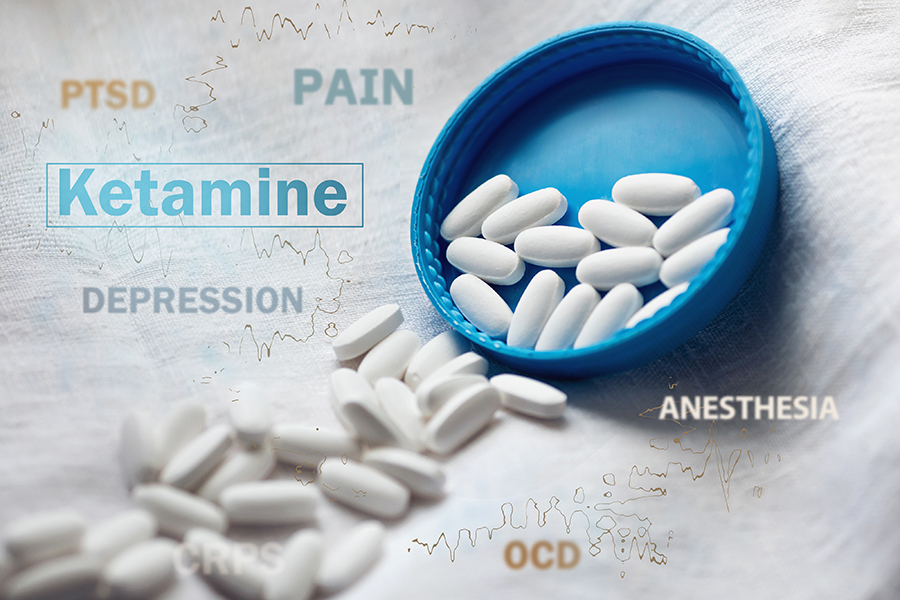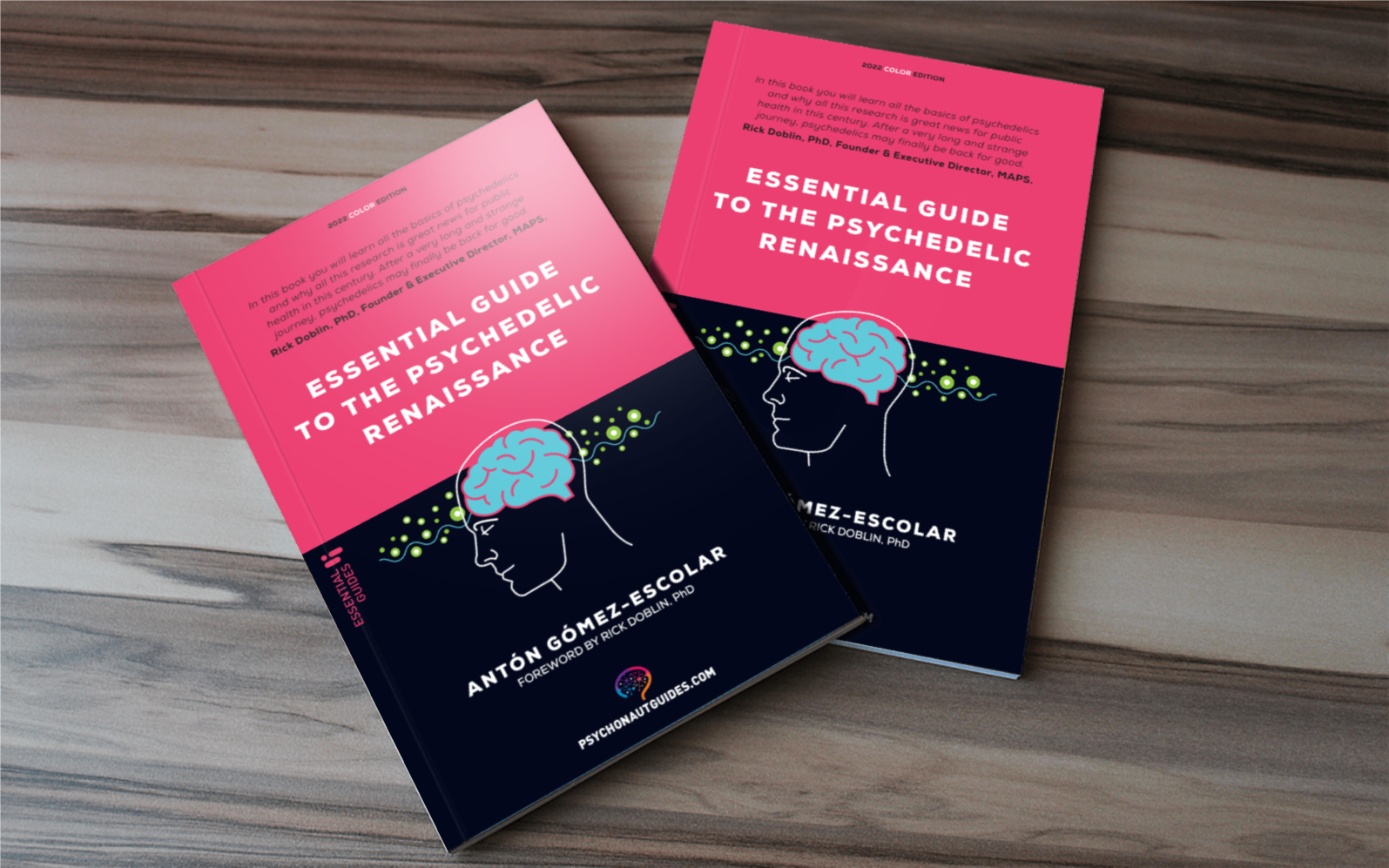By Gabriel García March 1, 2023
All the information in this article has been taken from the Essential Guide to the Psychedelic Renaissance, now available on Amazon.
Ketamine is a synthetic substance that belongs to the psychoactive class of semi-psychedelic or atypical psychedelic dissociatives, and the chemical family of arylcyclohexylamines. It can be sold as a powder or dissolved in liquid in pharmaceutical vial form. Since its approval in 1970, it has been widely used as a human and veterinary anesthetic and sold under the brand name KetalarR. Its recreational use also became popular in the rave scene of the 1980s.
Ketamine in modern medicine
Today, ketamine is still widely used in medicine. It is included in the World Health Organization’s “Essential Medicines List,” a list of the most effective medicines that should be available in any modern health system. The use of ketamine as an anesthetic or analgesic is very common in veterinary medicine, as well as in outpatient emergency medicine or with patients who are at risk with more conventional anesthesia, such as neonates or children. When used as an anesthetic or analgesic, it is usually administered together with a benzodiazepine to minimize its psychedelic effects.
Thanks to being an approved medicine, it was possible to conduct extensive research and use it as an off-label medication in various psychedelic-assisted psychotherapy treatments. Recently, a purification of the molecule called esketamine has been authorized for use in the treatment of depression in the form of a nasal spray under the trade name of SpravatoR, becoming the first substance with psychedelic effects to be authorized for the treatment of mental disorders.
 Image source: researchoutreach.com
Image source: researchoutreach.com
Consumption and dosage of Ketamine
Ketamine can be consumed via different routes, but in recreational use, it is mainly consumed by insufflation or orally, although in clinical settings, it is most commonly injected. The new esketamine medication called SpravatoR is a nasal spray that is inhaled, similar to snorting it. Powdered ketamine is often obtained by drying a diluted pharmaceutical preparation, in a process that many people call “cooking,” although it is more like “drying.”
Whether taken orally, through the nose or via injection, ketamine first enters the bloodstream and then reaches the brain, where it blocks NMDA glutamate receptors, leading to loss of sensation, difficulty moving, and eventually the notorious state known as “K-hole,” and acts on many other neuroreceptors at different doses. Since it does not appear to have any relevant action on the 5-HT2a receptor, it is considered an atypical psychedelic substance.
Ketamine is a substance with a wide range of effects depending on the dose consumed, but in general terms, the desired effects of this substance include dissociation, depersonalization, derealization, distortion of time and space, relaxation, insight, hallucinations, euphoria, sensation of floating, visual distortions, etc. In high doses, it induces psychedelic-like experiences, called “falling into a k-hole,” which could be treated in a similar way to a psychedelic experience, taking into account the loss of tactile sensitivity and motor control, very present in the specific case of ketamine. The experience of a “k-hole” can be desired and pleasant for some people but very unpleasant for others.
Unlike what happens with classic psychedelics, the dosage of this substance is very delicate since its effects can be highly variable, making it a very important issue to take care of. Taken orally, its effects take 10 to 30 minutes to become noticeable, with peaks reached in 45 to 90 minutes and a total duration of effects of 2 to 2.5 hours, depending very much on the dose consumed. Snorted, its effects take 5 to 10 minutes to become noticeable, peaking at 30 to 60 minutes.
Overall, ketamine is a versatile and fascinating substance with a complex pharmacology and a wide range of effects. From its origins as a surgical anesthetic to its current use in psychedelic-assisted psychotherapy, ketamine has played an important role in modern medicine and continues to offer potential for new therapeutic applications. However, as with any psychoactive substance, it is important to use it responsibly and with appropriate medical supervision to minimize risks and maximize benefits.

As stated, all this informatio was taken from the Essential Guide to the Psychedelic Renaissance, now available on Amazon. However, we also recommend Psychedelics and Mental Health, by Irene de Caso and Your Brain on Psychedelics, by Genís Oña, where you will learn the keys to the effects of psychedelics, capable of producing significant changes in the processes of perception, thought and consciousness. The book also includes a prologue written by one of the greatest eminences in this field, José Carlos Bouso, scientific director of ICEERS.
These books are now available on Amazon in physical and eBook format, as well as Apple Books. In addition, all titles are available in Spanish version on GuiasdelPsiconauta.com





